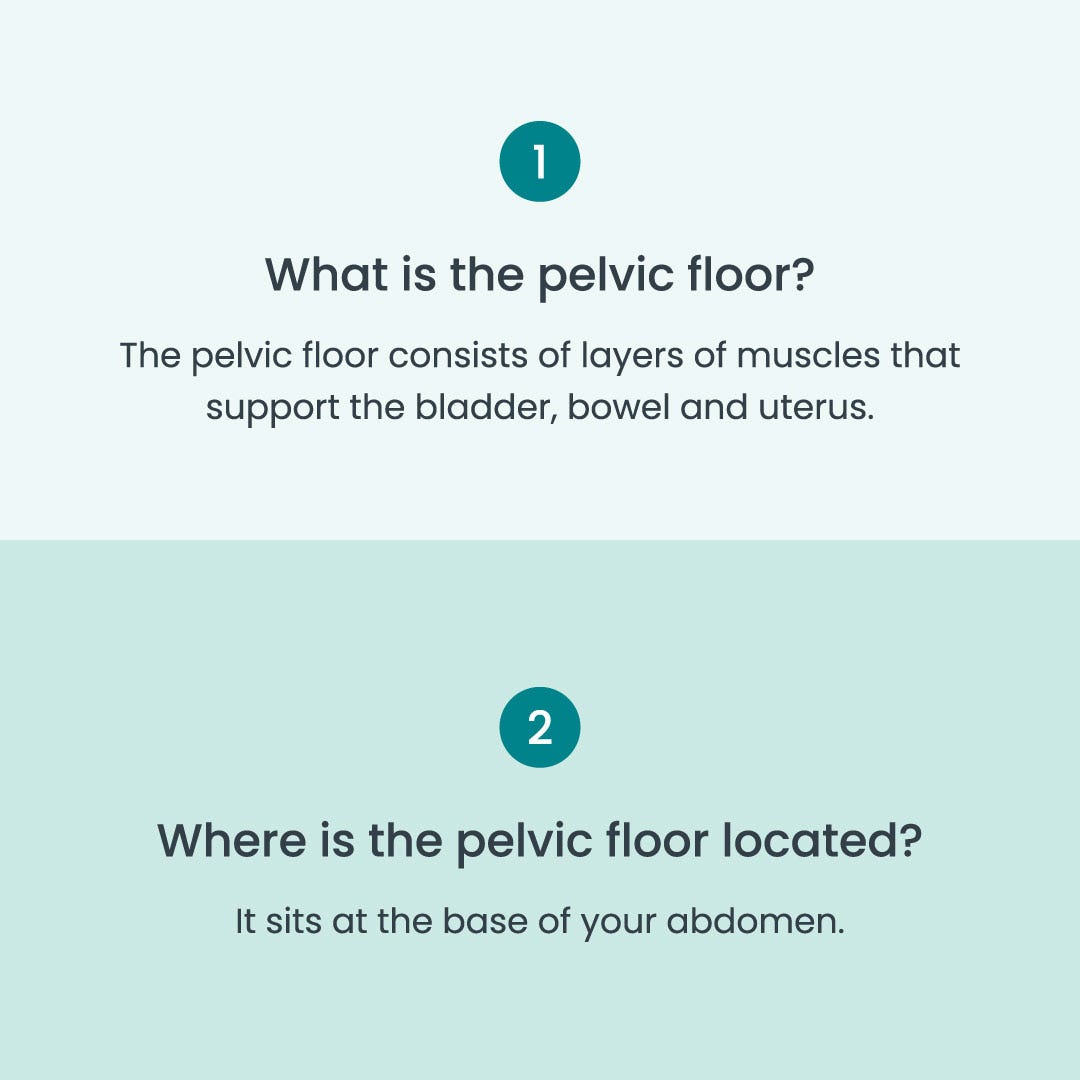Your pelvic floor is a group of muscles that form the base of your core. The pelvic floor muscles attach front to back at your pubic bone and your tailbone, and side to side from one hip bone to the other. The muscles of the pelvic floor provide support for all of your abdominal organs and also help control the release of urine and feces. The pelvic floor is an important part of your anatomy to pay attention to when you are pregnant because these muscles are going to be responsible for carrying the additional weight of your baby and your uterus throughout the pregnancy so you want these muscles to be strong, especially once you reach the third trimester.
If you’re planning to have a vaginal birth, your baby will also have to pass through your pelvic floor muscles on the way through the birth canal, so you will want these muscles to be supple and flexible. Spending some time every day doing targeted pelvic floor exercises will help them function optimally during pregnancy and birth and also help you have an easier time recovering postpartum.
The first step to getting your pelvic floor ready for pregnancy and birth is to identify how to engage and relax your pelvic floor. Your health care provider may have talked to you about kegel exercises and if you read much on the internet you might think that kegels are all you need to do for your pelvic floor, but only doing kegels would be like only doing sit ups and expecting it to tone your whole body. There is so much more that needs to be done to adequately strengthen and lengthen the pelvic floor muscles to prepare them for the additional work that will be required of them during pregnancy and birth. These muscles will form a hammock that your baby will rest on, so creating a functional and strong pelvic floor is essential for a healthy pregnancy. A dysfunctional pelvic floor can lead to lower back pain, constipation, inability to exercise, and trouble sleeping, especially as you get closer to your estimated due date.
Finding Your Pelvic Floor Muscles
The first step to getting your pelvic floor ready for pregnancy and birth is to identify how to engage and relax your pelvic floor. Your health care provider may have talked to you about kegel exercises and if you read much on the internet you might think that kegels are all you need to do for your pelvic floor, but only doing kegels would be like only doing sit ups and expecting it to tone your whole body. There is so much more that needs to be done to adequately strengthen and lengthen the pelvic floor muscles to prepare them for the additional work that will be required of them during pregnancy and birth. These muscles will form a hammock that your baby will rest on, so creating a functional and strong pelvic floor is essential for a healthy pregnancy. A dysfunctional pelvic floor can lead to lower back pain, constipation, inability to exercise, and trouble sleeping, especially as you get closer to your estimated due date.


Squatting is another wonderful way to create length and flexibility in the pelvic floor and it can even help lengthen and stretch tight hamstrings! Ideally, you can work up to being able to squat all the way down and keep your feet flat on the floor, but if your hamstrings are tight you may need to work up to that. One simple way to start increasing your flexibility of these muscles is to practice squatting by holding on to the door knobs on either side of the door. Use these to support yourself as you squat down as low as you can. When you squat, don’t tuck your pelvis under—make sure you keep your behind sticking out as this is what will help lengthen the pelvic floor muscles. When you are able to comfortably squat all the way down with your feet flat on the floor, spend several minutes in this position every day.
Many pregnancy exercise programs have some pelvic floor exercises built into them. Prenatal pilates or yoga classes will have strengthening exercises that will help tone your pelvic floor, but they don’t always target the relaxation of the pelvic floor muscles, so you may still need to do that on your own. If you are planning a vaginal birth, you can practice relaxing your pelvic floor in different positions by doing the breathing exercise described above when you are laying on your side, on your hands and knees, or even standing.
If you are having any signs or symptoms of a hypertonic (too tight) or hypotonic (too weak) pelvic floor, I recommend making an appointment with a pelvic floor physical therapist. This would include being unable to engage or relax the muscles as described above or any of the other symptoms listed below. A pelvic floor physical therapist is going to give you an individual assessment and develop a care plan that will provide you with targeted exercises specifically addressing the issues you are experiencing. Some pelvic floor PT’s need a referral from your ob/gyn or midwife, so let them know if you would like them to send that over before you go.
Signs that you might have a weak or tight pelvic floor are often the same and may include:
- urinary incontinence—unable to control when urinate
- stress incontinence—leakage of urine when you sneeze, cough, or jump
- being unable to stop the flow of urine when you go to the bathroom
- lower back pain, tailbone pain, or hip pain
- fecal incontinence
- pelvic organ prolapse
- pressure or an achy feeling in your pelvis or vagina
Signs You Might Have a Weak or Tight Pelvic Floor
- Urinary incontinence—unable to control when urinate
- Stress incontinence—leakage of urine when you sneeze, cough, or jump
- Being unable to stop the flow of urine when you go to the bathroom
- Lower back pain, tailbone pain, or hip pain
- Fecal incontinence
- Pelvic organ prolapse
- Pressure or an achy feeling in your pelvis or vagina







